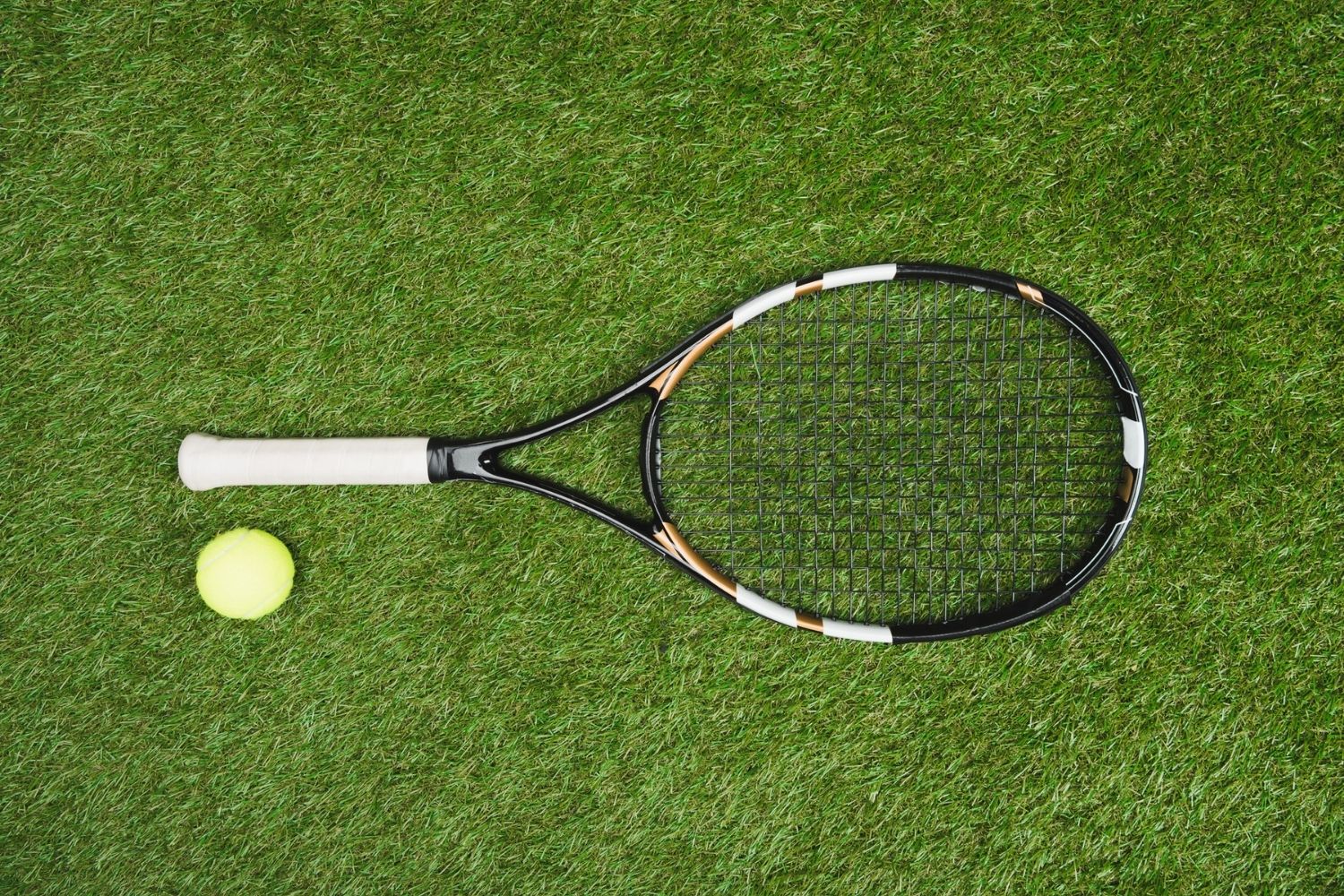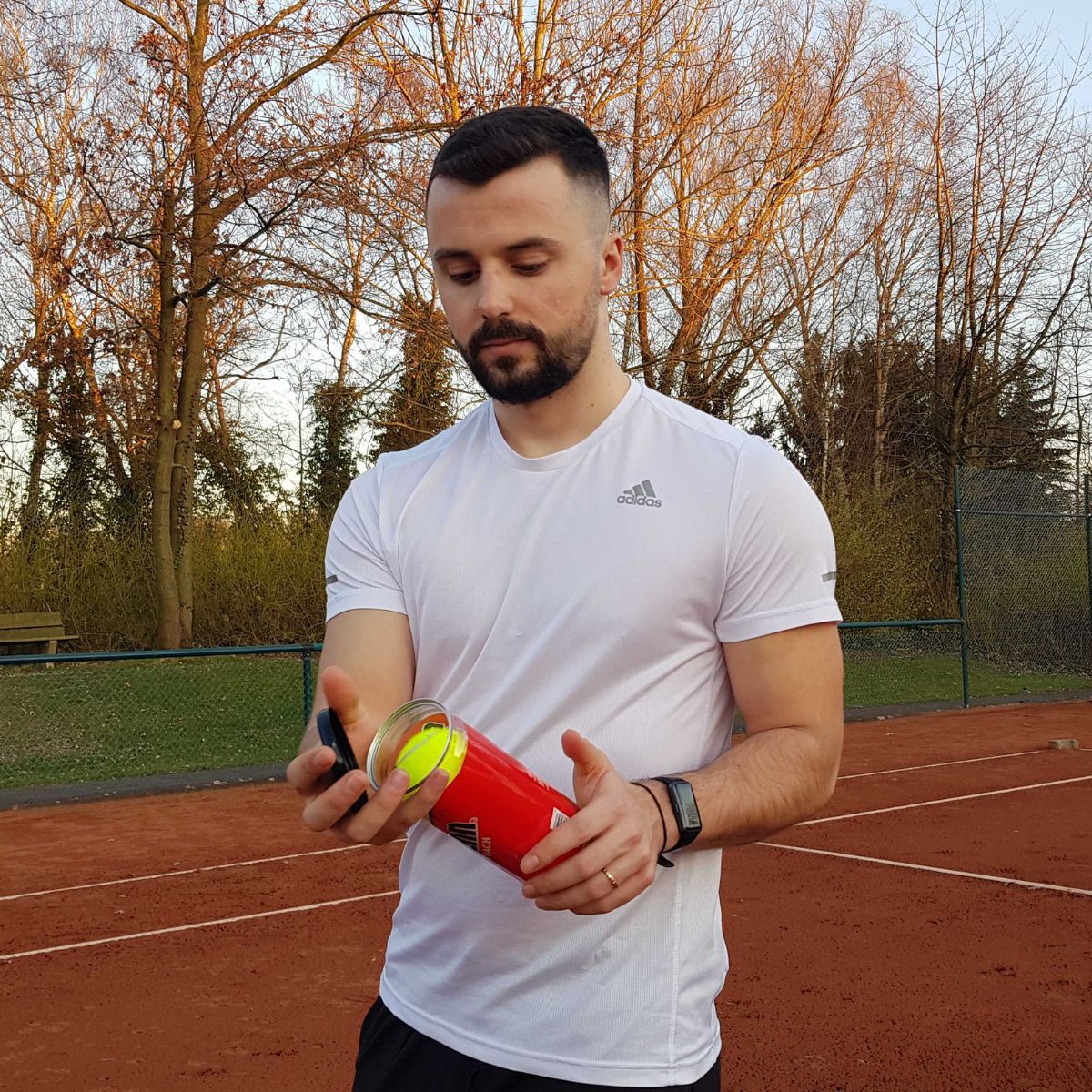- Choosing the wrong tennis racket can send you directly toward losing all your games and getting used to a game style you can never master.
- Beginners should choose a racket size that feels comfortable and lightweight with a large head size for more power.
- Intermediate players should consider smaller, heavier rackets with a medium head size for more control.
- Advanced players have more control and can experiment with different sizes to match their playing style.
- Length, weight, swingweight, frame stiffness, and comfort are all additional factors to keep in mind when choosing a tennis racket
With a great range of tennis rackets in stores, you may wonder how to choose a tennis racket. I share your sentiment — I also used to find myself frustrated while trying to buy a new racket. However, it does not have to be a taxing choice once you learn all the technicalities. The guide I offer will ease the process; I will go through everything you need to know to make the right choice.
Many components will play an important role when buying a tennis racket. You should consider how well-seasoned you are in the sport and what you aim for in your play style, whether a feeling of control, generating more power, spin, and the like.
But worry not, there is a tennis racket to facilitate your every need! Read on to pick up all the factors you need to evaluate before selecting a tennis racket.
Choosing a Tennis Racket by Skill Level
One of the most important things to consider when thinking about how to pick a tennis racket is your skill level. Whether you are a beginner, intermediate, or advanced player, your skill sets will greatly differ from one level to the other. Considering this, the things you want and should look for vary accordingly.
Beginners
If you are a beginner, you may not know what to look for in a tennis racket. And not having the proper knowledge to make the right call may lead you to go for a racket that seems pretty or the racket type of one of your favorite tennis players. But I am here to advise you against these common beginner mistakes!
As an inexperienced player, you should go for a tennis racket size that feels comfortable and lightweight. Your comfort should be of utmost importance; it should feel like an extension of your own arm rather than an external object.
Additionally, lightweight rackets will help you survive the long hours of practice without straining yourself too much until you get used to the feel.
As a beginner, you will want to stick to beginner tennis rackets that weigh less than 312 grams (11 ounces); however, if you are on the smaller side weight and height-wise, you may want to go for a racket around 8-9 ounces. Rackets that weigh less will prevent arm injuries and aid in maneuverability.
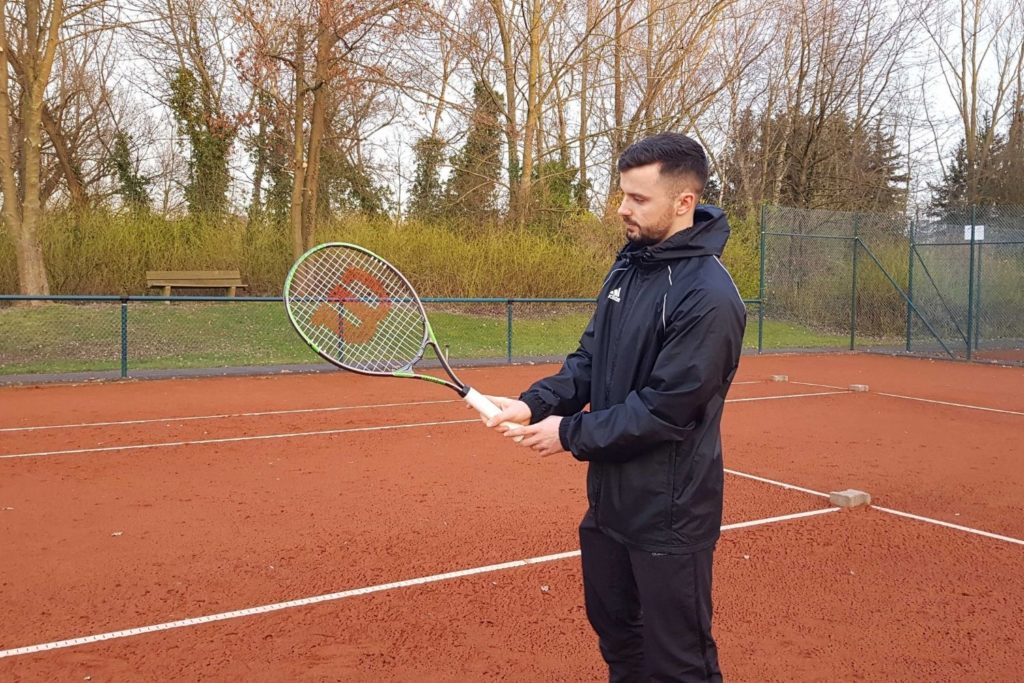
Another crucial factor you need to consider is the grip size. I cannot stress this enough: choosing the right tennis racket grip size should be your main concern to avoid any injuries that might occur. Moreover, the right grip size will help you achieve a better grip, which will help with control later on.
Now, I understand that some of you may want to be in total control of your racket from the very beginning of your days as a tennis player. However, you will be surprised to discover that larger head sizes, such as above 100 square inch ones, are best suited for beginners, despite offering less control, as they will have a larger margin for error.
A larger margin for error will make it easier for you to not miss the ball coming your way in the beginning.
Additionally, larger head sizes will help generate more power, so you do not have to worry about striking the ball as hard as possible. Instead, you will be able to focus on technique and learning the right posture and the right way to strike.
Some tennis rackets that I would recommend you try out as a beginner are:
- Head Titanium Ti.S6
- Wilson Hyper Hammer 5.3
- Wilson Ultra 110
- Babolat Boost Drive
- Babolat Boost Aero
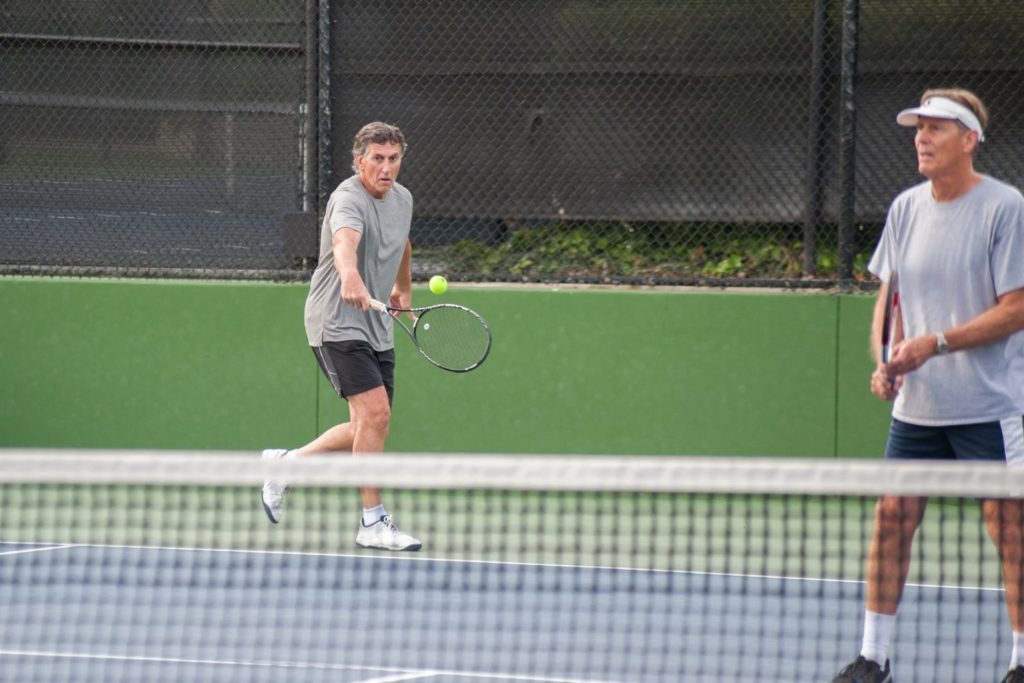
Intermediate
If you are an intermediate player and have a general sense of control and power generation, you should consider smaller, heavier rackets.
Now is the time for you to switch from bigger head sizes to smaller ones. If your initial choice as a beginner was a racket with a head size over 100 square inches, you should opt for a racket between 98 and 100 square inches for a smooth transition into smaller head sizes.
Such head sizes, which fall under the medium-size category, will generally sacrifice some of the power while still having similar maneuverability as the larger head sizes. However, these tennis rackets will give you more control due to their smaller size.
Since, by this time, you will have gained more experience, you might want to experiment with the stiffness of your frame as well to adjust the power generated. You might also want to try out different string patterns that work best for your play style.
Another change you may want to go for would be getting a heavier racket that will offer you more stability.
Some of the best tennis rackets for intermediate players are:
- Babolat Pure Aero 2019
- Babolat Pure Strike
- Wilson Clash 100
- Wilson Pro Staff 97L
- Head Graphene 360 Speed Pro
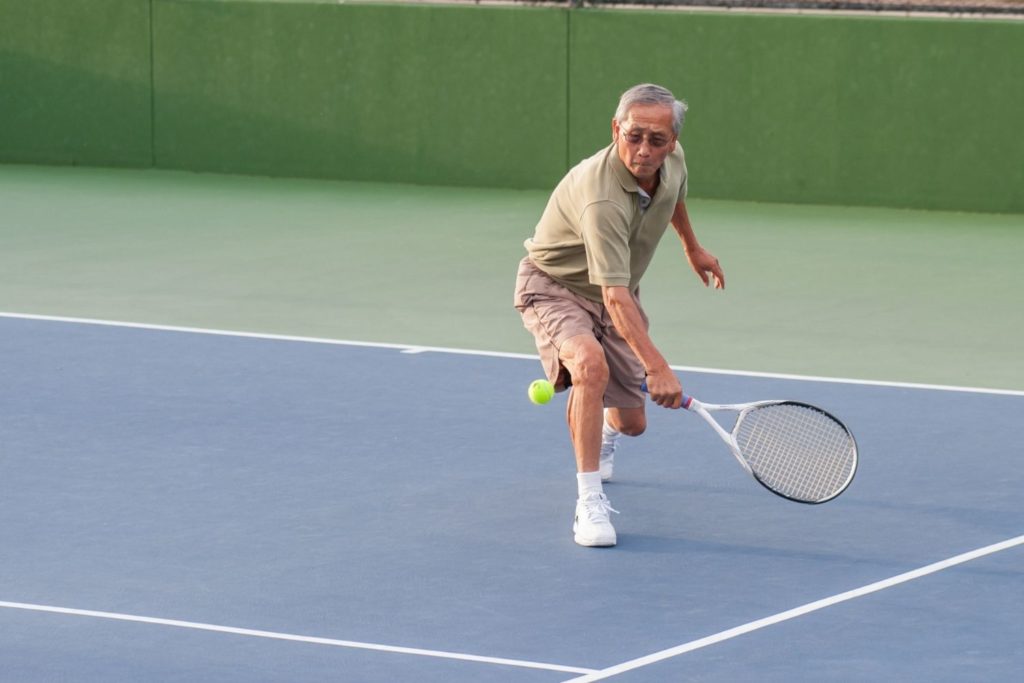
Advanced
As an advanced player, you should have developed your own playing style. Therefore, you know what you would like to change, improve, and add to your game.
You should have already learned how to generate the needed amount of power and effortlessly control your racket at this point in your career as a tennis player. So, you may want to switch to a heavier racket with smaller head size, but it is not a necessary change to make.
If you are looking to improve your performance, the best choice you can make is to match the specs of the racket you are looking to buy to your game style.
So, if you have a good sense of control but would like to generate more power, you should look into larger head sizes instead of smaller ones. Whereas if you can already generate much power but lack in the area of control, you should try out control rackets.
Some popular suggestions for advanced players are:
- Wilson Pro Staff RF97
- Wilson Blade v8 98
- Yonex VCORE Pro 97 310g
- Head Graphene 360+ Gravity Pro
- Head Graphene 360+ Prestige
Grip Size
Before we get into the specifics of choosing the right grip size, you should understand its meaning.
The grip size is the perimeter of the racket’s handle. It ranges between 4 to 4 3/4 inches. Of course, the right grip size will depend on the size of your hands.
In choosing a tennis racket, one of the most important factors to consider, as I mentioned above, is the grip size. It is essential because the wrong size will make you prone to arm and wrist injuries during games. A smaller grip than what you need will require you to grip harder and tighter, thus straining your muscles. A larger grip will also strain your muscles and generally feel uncomfortable to handle.
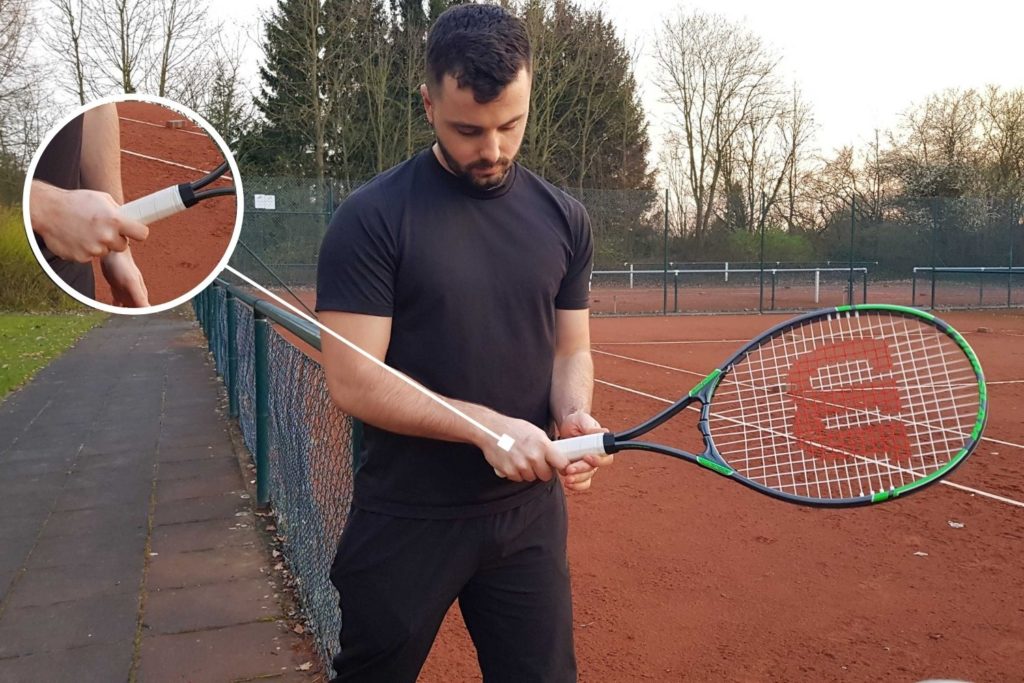
One of the ways you can measure your grip size is to put a ruler on the top crease of your palm and measure the distance from that spot to the tip of your ring finger. However, you may want to try a size smaller or larger than what you measure to see what you feel most comfortable with.
You should also note that even if you do not get the right grip size, you can add an overgrip and easily fix the problem if it is smaller than what you require.
Racket Head Size
Choosing the wrong tennis racket head size can send you directly toward losing all your games and getting used to a game style you can never master. The racket head size is an important factor to consider before buying a tennis racket, as it strongly impacts your game. It is essentially the area of the stringbed. Head sizes are divided into three categories:
- 85-97 sq. inches, mid-sized
- 98-104 sq. inches, mid-plus
- 105+ sq. inches, oversized
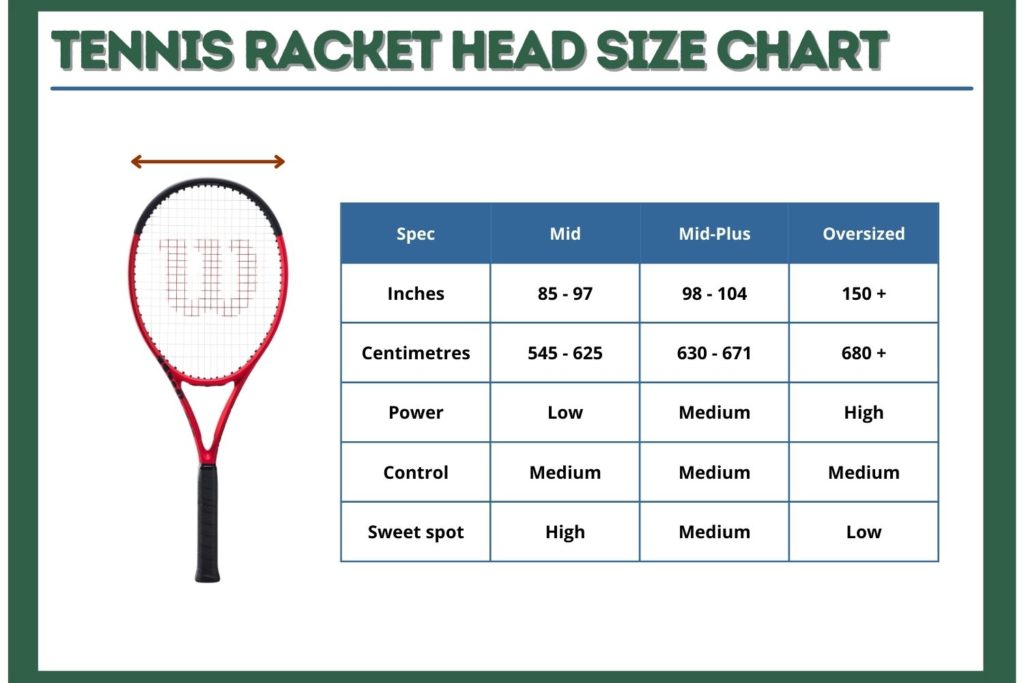
Oversized rackets are perfect for beginners with a larger sweet spot and an increased margin for error, whereas mid-sized rackets are better suited for more advanced players who value control.
Meanwhile, mid-plus rackets offer control while sacrificing only part of the power and sweet spot that oversized rackets can offer. Nevertheless, it all boils down to personal preferences, so you have to choose whatever makes you feel the most comfortable and confident on the court!
Length
Next up on the list of essentials is the tennis racket length. The tennis racket length is the distance from the butt of the racket to the top of its head. The official rules state that the length of your racket as an adult should not exceed 29 inches. Generally, adult rackets fall between 27 and 29 inches.
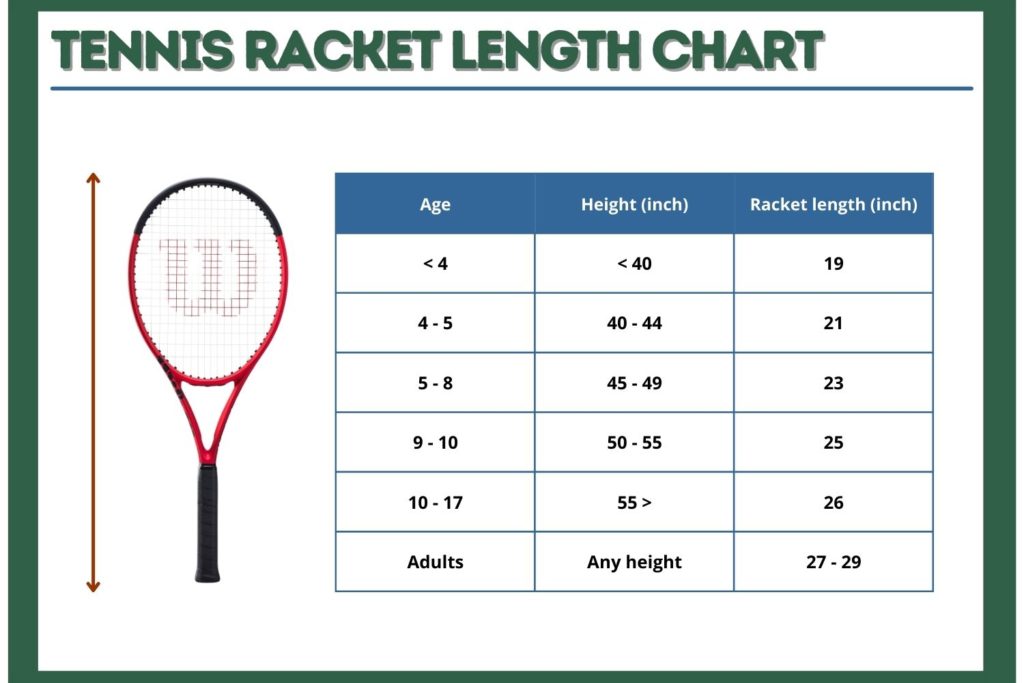
Choosing the right length for yourself depends solely on your style of play and what you consider the most important: reach and power or control and maneuverability.
A longer racket will give you more reach and power; however, it must sacrifice control and maneuverability for the cause.
This may cause you trouble with shots near the net (volleys) or ones where you need to strike the ball from a short distance from your body.
On the other hand, if you are a player that can easily generate power and do not mind sacrificing it, you can opt for a shorter length to help you achieve more control and easily maneuver as you please around the court.
Weight
Tennis racket weight should also be a factor to bear in mind before making your choice. This factor also depends on your play style, personal preferences, and skill level. Lighter rackets will help you with maneuverability; however, they lack stability.
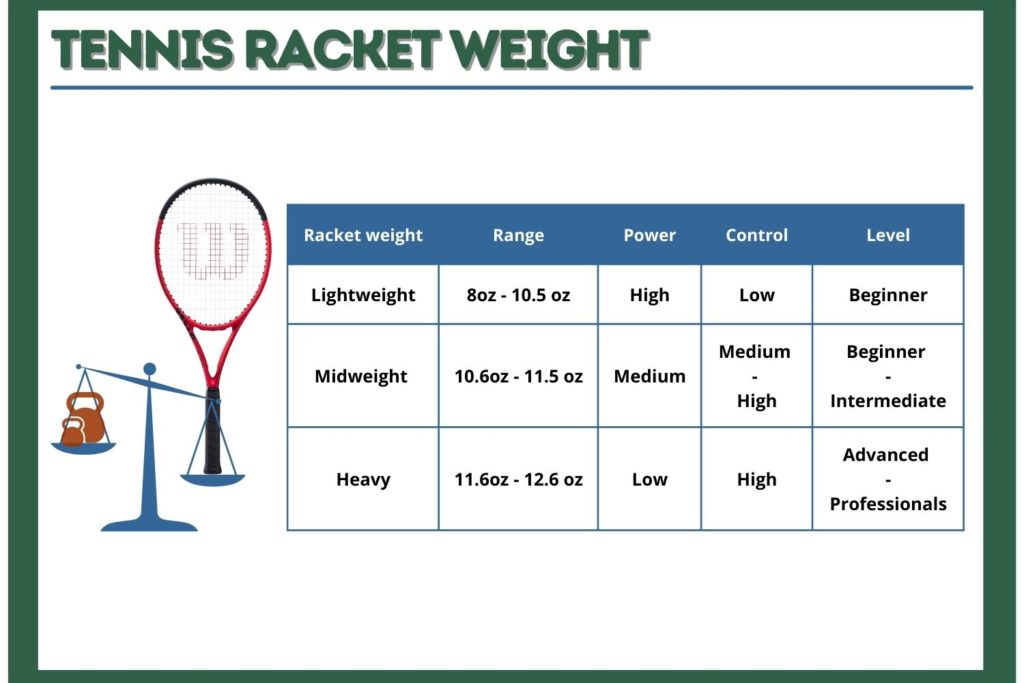
On the other side, we’ve got heavier rackets, which are more stable and reduce shock during shots. They are also great for baseline players. However, if you are not a seasoned player, you may find these rackets challenging as they will tire you out quicker due to their weight.
Moreover, if you are not used to playing tennis, such rackets may even lead to injuries due to the strain they cause to the muscles.
Of course, as a beginner player, you should consider buying a lightweight tennis racket as it will help you maneuver and control the racket while avoiding any strain heavier rackets may cause. However, this is just a piece of friendly advice; you should see what feels best for you before choosing your racket.
Swingweight
While you might have heard all of these factors before, I will present another one you most likely did not hear about if you are a beginner player. The swing weight, which I would define as how heavy you perceive the racket to be once swung.
This component is closely related to the tennis racket’s weight and length, and any difference in those is bound to affect the swing weight.
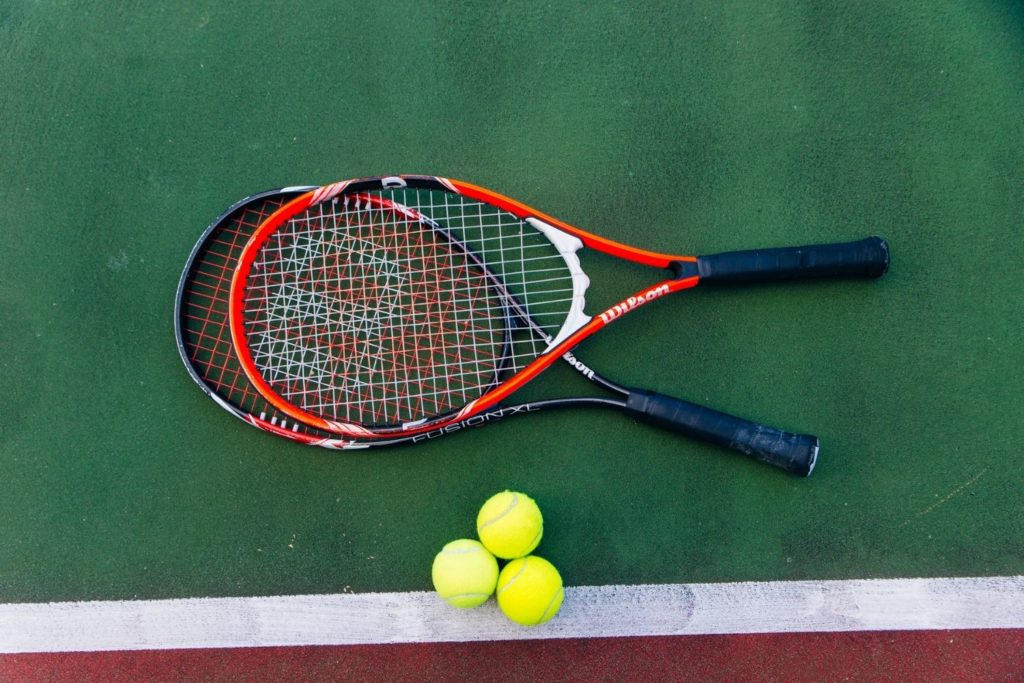
So, if a racket’s length is on the larger side of the spectrum, its swing weight will be higher. Similarly, heavier rackets tend to have a higher swing weight.
On the other hand, the swing weight in shorter rackets will be lower than in longer rackets, and less heavy rackets will also have a lower swing weight than their heavier counterparts.
Since these components are intertwined, lower swing weight means more maneuverability and control, whereas higher swing weight offers more power and stability.
Frame Stiffness
Frame stiffness is another essential but neglected factor that I encourage you to consider before picking a tennis racket. This can greatly affect your racket’s power output, control, and comfort.
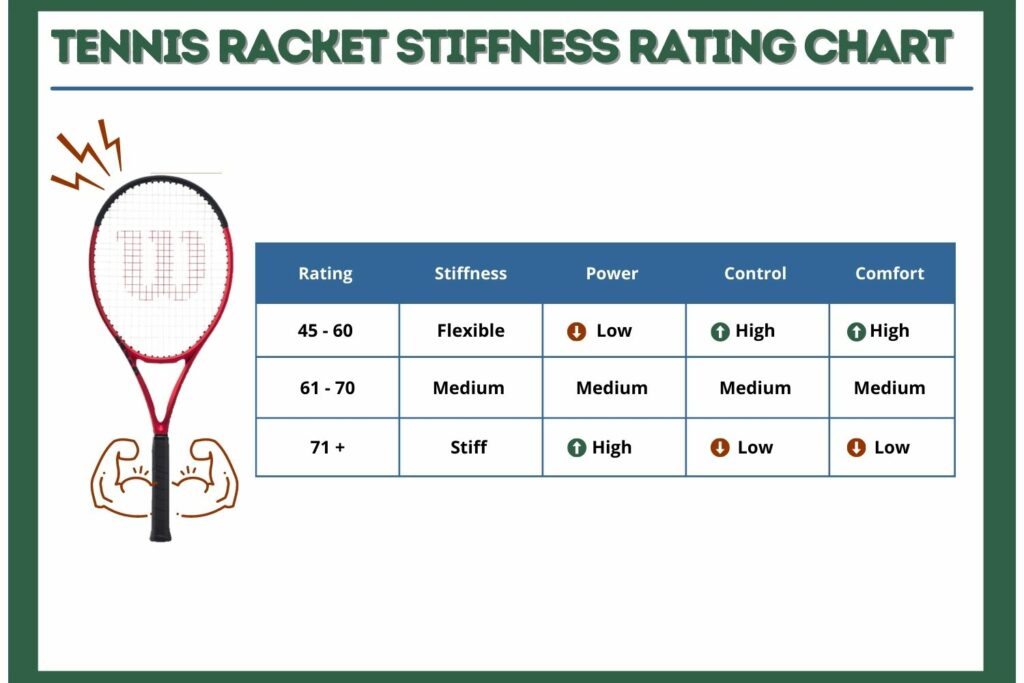
Stiffer frames are great if you are a player that values power, as they do not bend back much; thus, the power loss from the initial hit of the ball is minimal. Contrary to popular belief, flexible rackets lack power.
The more a racket bends, the longer the contact between the ball and the strings will be, resulting in a power loss.
However, that is not a bad thing per se; although they lack power, flexible rackets make up for that in control. So advanced players who can generate power themselves may prefer flexible frames to stiffer powerhouses.
Moreover, stiffer frames tend to generally be more uncomfortable than flexible ones, so even if you value power over all else, you may want to reconsider. Nevertheless, different players measure comfort differently, so what feels comfortable for me may not feel comfortable for you. Therefore, choose according to your preferences!
Balance
Tennis racket balance is another factor to watch out for. Tennis rackets fall under three balance types:
- Head light
- Head heavy
- Balanced (or even balanced)
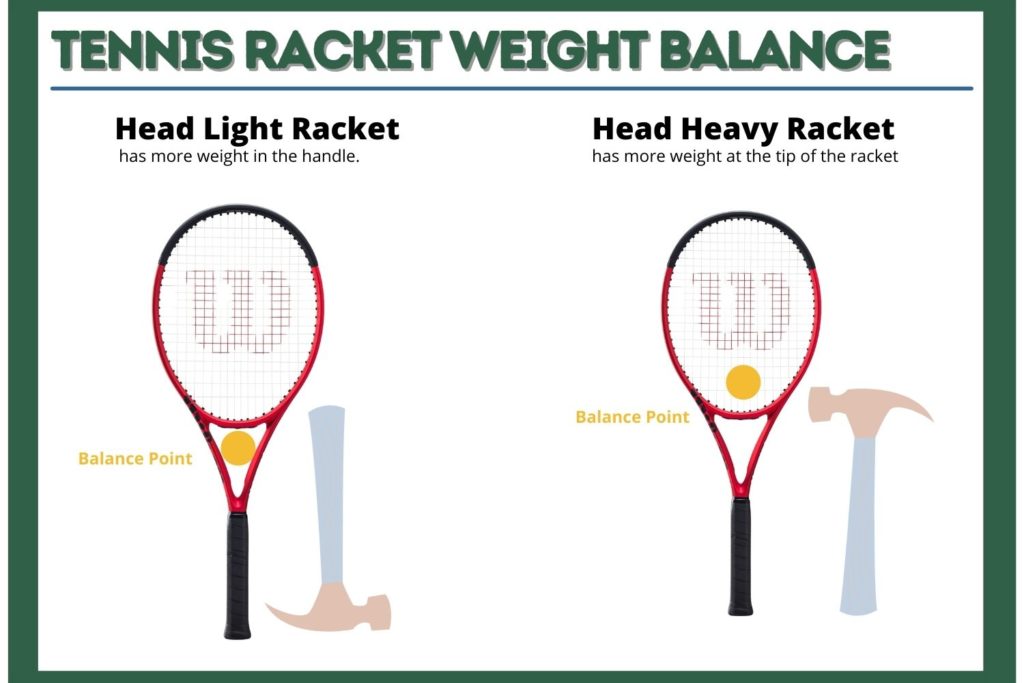
Head light rackets are generally the heaviest type. Most of their center of mass, which is, put simply, the point of balance in a racket, is located in its handle. Due to their heavy weight, these rackets excel in reducing shock. You will also find these rackets to have maneuverability as most of the racket’s weight is within your hands. They are mostly preferred by traditional players.
Head heavy rackets are lightweight ones. Their center of mass is located in the racket’s head. Such rackets will aid you in maneuverability due to their lighter weight. They will also provide you with considerable stability.
Balanced or even balanced rackets’ weight is distributed evenly throughout the racket, so there is no point in the rackets where there is more mass than in other parts. These types of tennis rackets are neither light nor heavy but somewhere in the middle, offering you both maneuverability and stability.
String Pattern
The last element in the list to think about is the string pattern. Tennis racket string patterns are divided into two categories: open or closed patterns.
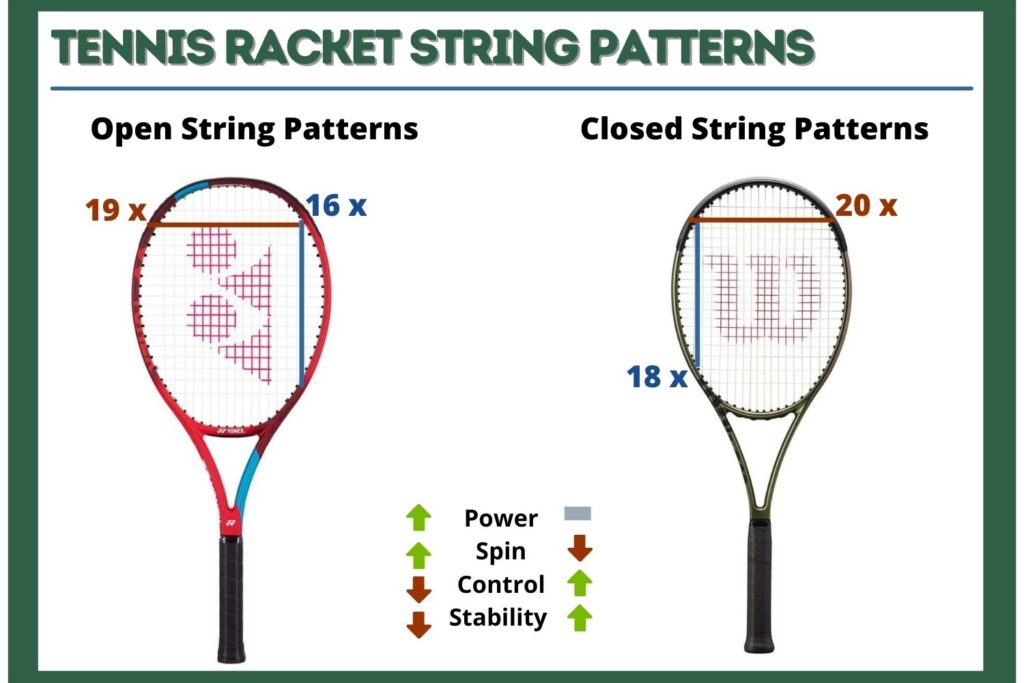
Open string patterns, such as the 14×18 one, have more space between the strings, whereas, in closed patterns, such as the 18×20 one, the strings are denser; thus, there is less space between one another.
Open patterns offer more string movement. However, this causes the strings to break faster than in closed patterns, which have more strings touching the ball in impact, resulting in less breakage.
Open string patterns also aid you in generating more power and spin; however, you will have less control and stability with such patterns. On the other hand, closed string patterns will not offer you much of a spin without straining yourself, but they sacrifice that for more stability and control.
